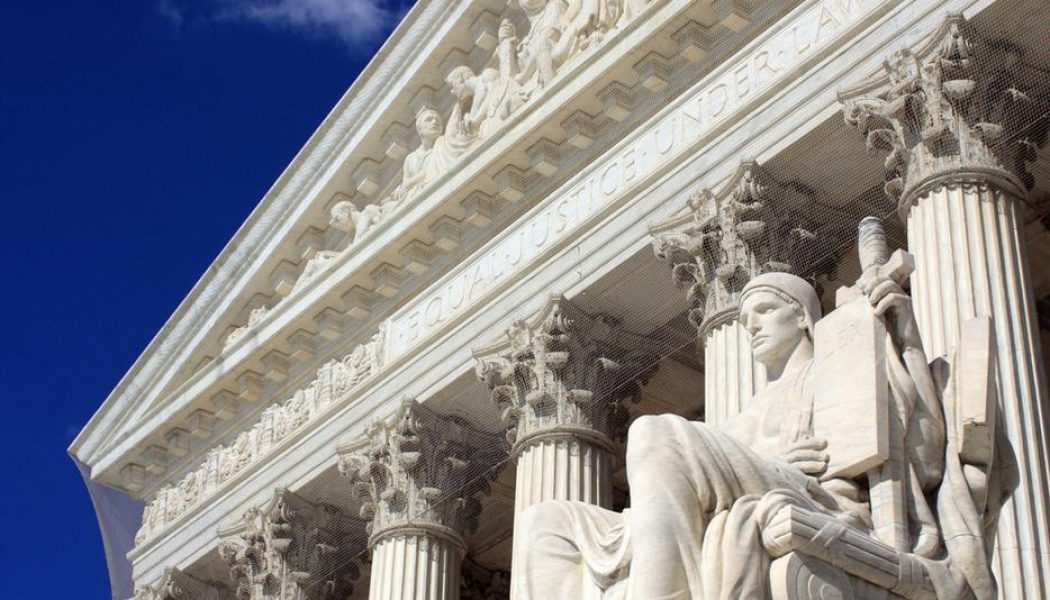
The American College of Obstetricians and Gynecologists and other pro-abortion groups pushed for the restrictions to be lifted during the COVID-19 pandemic so women would not have to travel to get the abortion pill.
WASHINGTON — The U.S. Supreme Court in a 6-3 decision Tuesday reversed a federal judge’s injunction that had blocked FDA rules requiring women to obtain an abortion pill from a doctor in person.
“The question before us is not whether the requirements for dispensing mifepristone impose an undue burden on a woman’s right to an abortion as a general matter,” Chief Justice John Roberts wrote Jan. 12. “The question is instead whether the District Court properly ordered the Food and Drug Administration to lift those established requirements because of the court’s own evaluation of the impact of the COVID–19 pandemic.”
“Here as in related contexts concerning government responses to the pandemic, my view is that courts owe significant deference to the politically accountable entities with the ‘background, competence, and expertise to assess public health,’” Roberts said, citing his previous arguments supporting state-imposed regulations on churches during the pandemic.
“In light of those considerations, I do not see a sufficient basis here for the District Court to compel the FDA to alter the regimen for medical abortion,” Roberts continued.
The normal requirement of the Food and Drug Administration (FDA), in place since 2000, is that the abortion pill be dispensed and administered in-person. The regulation is part of the REMS protocol, reserved for higher-risk drugs and procedures.
The American College of Obstetricians and Gynecologists and other pro-abortion groups pushed for the restrictions to be lifted during the COVID-19 pandemic so women would not have to travel to get the abortion pill; they successfully won an injunction on the restrictions in July, at a federal district court.
Judge Theodore D. Chuang of the District of Maryland ruled that women could be prescribed the pill remotely and have it delivered or mailed to them.
In response, members of Congress asked the FDA to classify the abortion pill regimen as a public health hazard, and remove it from the market.
Justice Department attorneys appealed the case to the Supreme Court, which in October did not reverse Chuang’s decision or rule on the merits of the case; the court rather sent the case back to be reconsidered in several weeks, with the administration having an opportunity to present new evidence for its case.
Chuang did not change his ruling in a Dec. 9 decision, writing that the pandemic circumstances have not changed and women would still have difficulties traveling to obtain a prescription for the pill regimen in-person.
He wrote that “particularly in light of the substantial spread of COVID-19 in recent weeks that increases the risk of all travel, the Court does not find that any changes to economic conditions or access to medical facilities, childcare, or transportation since the issuance of the (prior block on the rule) have been so favorable as to constitute changed circumstances”to justify lifting the block.
The administration then appealed back to the Supreme Court, saying it presented new evidence to Chuang that its restrictions are not an unlawful “undue burden” on abortion, because abortions increased in 2020 in states where the regulations remained.
Chief Justice Roberts was joined in his decision by newly appointed Justice Amy Coney Barrett, as well as Justices Clarence Thomas, Samuel Alito, Brett Kavanaugh and Neil Gorsuch.
Justices Elena Kagan and Sonia Sotomayor penned a dissent, and Stephen Breyer also said he believed the previous ruling should have been left in place.
Join Our Telegram Group : Salvation & Prosperity







